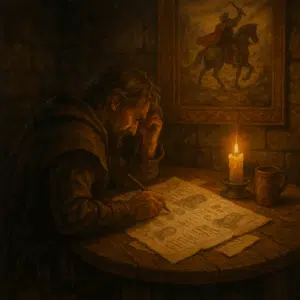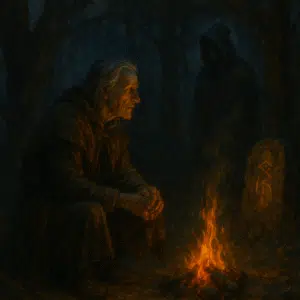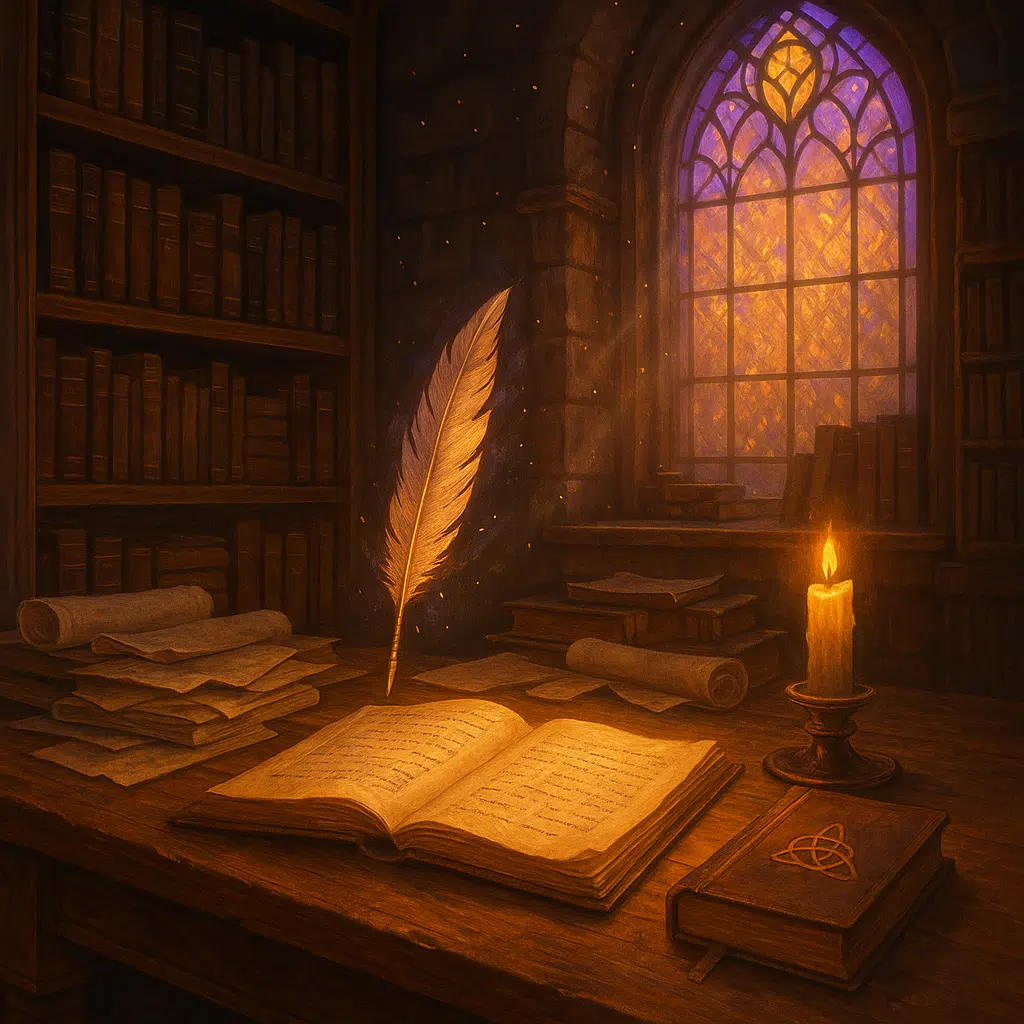Estimated Reading Time: 28 minutes (5240 words)
The broken sword on the shelf isn’t just decoration. For readers of David Gemmell’s Drenai Saga, it represents something deeper – a silent reminder of the code we carry within ourselves long after the pages close.
Fantasy literature offers many escapes, but few journeys reshape the traveler quite like Gemmell’s tales of flawed warriors and impossible stands. These aren’t simply stories of battles won against overwhelming odds; they are intimate explorations of honor forged in darkness, of redemption sought through sacrifice, of ordinary people discovering extraordinary resolve within themselves.
What makes a reader return to the same dog-eared copies of Legend or Waylander during personal crises? Why do fans speak of Druss, Skilgannon, and Rek as if discussing old friends who helped them through difficult times? The answer lies not in the expert swordplay or mythic quests, but in Gemmell’s profound understanding of human struggle – the inner battles that mirror the outer ones.
For many of us, the wisdom found between these weathered covers has silently shaped our personal codes. We recognize ourselves in the legendary axeman who fights age and doubt as fiercely as any enemy. We see our own moral wrestling in the assassin seeking atonement. These characters endure because they struggle as we do – imperfectly, painfully, but with unwavering commitment to what matters most.
The true magic of the Drenai novels lives in this quiet transformation of reader into carrier of the flame, where fictional courage becomes real-world resilience. The battles may be fantasy, but the honor code they illuminate burns with truth that changes lives…
- David Gemmell’s Drenai Saga stands apart in fantasy literature not just for its gripping battles and iconic characters, but for the profound moral framework that resonates long after the final page. These tales of flawed heroes facing impossible odds have shaped readers’ personal codes and provided emotional anchors during difficult times.
- Read beyond the battles to find your code: Beneath Gemmell’s expertly crafted action sequences lies a consistent exploration of honor, sacrifice, and redemption that readers often incorporate into their own moral frameworks.
- Connect with heroes through their flaws, not their strengths: Druss, Waylander, and Skilgannon endure because they struggle with weakness while striving for better—mirroring our own internal conflicts in ways perfectly human rather than mythic.
- Recognize how Drenai values endure across timelines: Whether in the earliest chronological tales or the final chapters of the saga, Gemmell’s consistent themes of courage, friendship, and holding to principles provide a cohesive emotional through-line spanning centuries.
- Find your personal touchstone character: Many readers report returning to specific Drenai novels during personal hardships, using characters like Druss as emotional benchmarks for resilience or Waylander as guides through moral complexity.
- Appreciate the informational layers on rereads: Unlike many fantasy series focused solely on plot revelation, Gemmell’s work reveals deeper philosophical insights with each revisit, explaining the unusually high rereading rate among his dedicated fanbase.
- Understand Gemmell’s literary legacy in your own reactions: The emotional resonance readers feel isn’t accidental—it’s the direct influence of Gemmell’s pioneering approach to heroic fantasy that prioritized ethical questions over worldbuilding mechanics.
These novels aren’t merely entertainment but companions on life’s journey, offering wisdom through adventure rather than lecture. As we explore the Drenai Saga’s lasting impact, we’ll discover how these stories have silently shaped an entire generation of readers and writers alike.
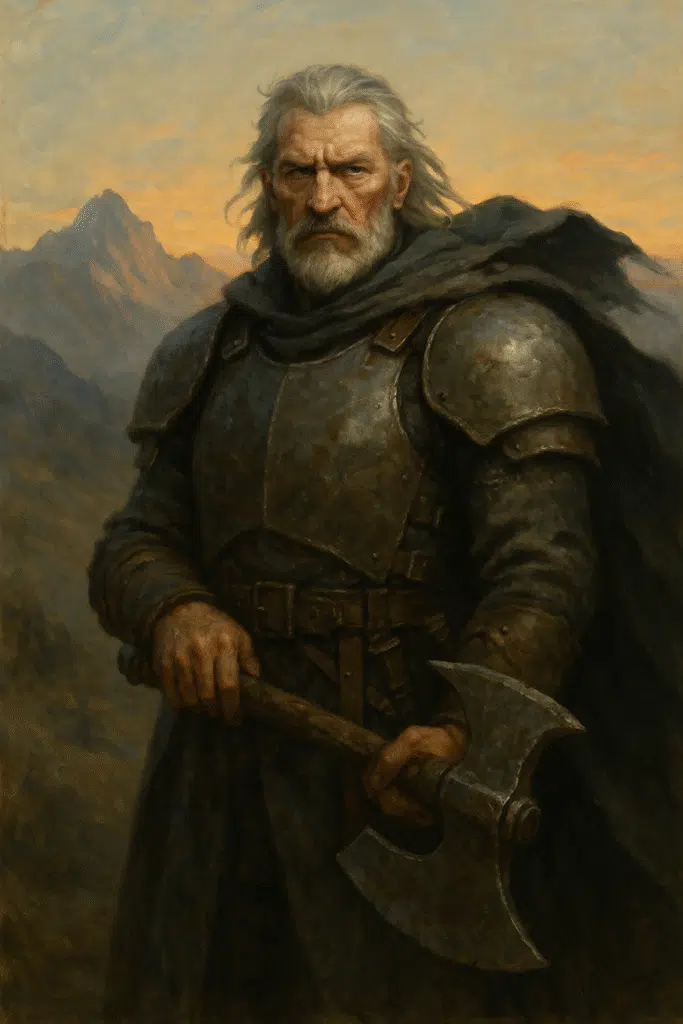
The Warrior Code Behind the Words
How Gemmell’s moral framework transcends typical fantasy tropes
At the heart of the Drenai Saga lies a moral framework that eschews the simplistic good-versus-evil dichotomy common in fantasy literature. Gemmell crafts a world where heroism isn’t defined by immaculate virtue but by difficult choices made under impossible circumstances. His characters operate within a warrior code that values courage, loyalty, and sacrifice above all—not as abstract ideals, but as daily practices that define one’s worth.
Unlike many fantasy narratives where morality comes with convenient labels or magical signifiers, Gemmell presents a more honest human condition. His heroes don’t wear white hats or carry enchanted tokens of their virtue. They are killers, mercenaries, and outlaws who nonetheless carve out moral territories within themselves. The Drenai code is transmitted not through ornate ceremonies or mystical revelations but through actions, often small ones, that reveal character in crisis.
What makes this approach transcendent is how it mirrors the real moral struggles readers face. When Druss declares, “Never violate a woman, nor harm a child. Do not lie, cheat or steal. These things are for lesser men. Protect the weak against the evil strong. And never allow thoughts of gain to lead you into the pursuit of evil,” he articulates a code that requires no mystical belief system or fantastical cosmology—only human commitment to living honourably in a dishonourable world. This kind of authentic character development demonstrates how the most memorable literary figures emerge from clear moral foundations rather than surface-level traits.
The unexpected depth beneath the battles
Beneath the surface of Gemmell’s expertly crafted battle sequences lies a profound meditation on the nature of violence itself. While other fantasy works often glorify combat or treat it as spectacular entertainment, Gemmell never allows readers to forget its cost. His battles serve as crucibles where character is both revealed and forged, not merely as plot devices to advance the narrative.
The famous siege of Dros Delnoch in “Legend” appears initially as a straightforward military conflict, but gradually unveils itself as an exploration of how humans face mortality, how courage manifests differently across individuals, and how community forms under pressure. The physical battle becomes secondary to the internal struggles of the defenders, each confronting their fears and limitations.
This unexpected depth extends to how Gemmell handles violence itself. The swift brutality of his combat scenes—sparse in description yet psychologically impactful—serves as counterpoint to the moral complexities surrounding them. His warriors don’t discuss philosophy amid bloodshed; instead, their actions and regrets speak volumes about the burden of taking lives, even when necessary. It is this layering of meaning that elevates seemingly straightforward heroic adventures into profound explorations of the human condition.
Heroes Defined By Their Scars
Druss: When strength meets vulnerability
Druss the Legend stands as Gemmell’s most iconic creation—an axe-wielding warrior of unparalleled skill whose greatest battles are often against himself. What makes Druss compelling isn’t his battlefield prowess but the vulnerability beneath his legendary status. As readers journey with him from youth to old age across multiple novels, they witness strength defined not by invincibility but by continuing forward despite accumulating wounds, losses, and regrets.
The aging Druss of “Legend” resonates particularly deeply with readers because his physical decline mirrors challenges everyone eventually faces. His arthritic hands gripping Snaga, his axe, as he prepares for one final battle becomes a powerful metaphor for human dignity in the face of inevitable decline. “I am old,” he tells younger fighters, but refuses to let that define his worth or limit his contribution. This vulnerability in strength creates the kind of psychological safety in storytelling that allows readers to explore their own fears about aging and mortality through a fictional framework
Perhaps most poignantly, Druss’s greatest vulnerability—his love for Rowena—humanizes him beyond the typical fantasy warrior archetype. His lifelong devotion to his kidnapped wife reveals that authentic strength includes the capacity for tenderness and commitment. Through Druss, Gemmell demonstrates that true heroism isn’t about being fearless or flawless, but about acknowledging one’s limitations while refusing to be defined by them.
Waylander’s journey through darkness toward redemption
In Waylander, Gemmell crafts perhaps his most morally complex character—an assassin whose journey begins with a terrible act of betrayal and unfolds as a search for redemption that he himself doesn’t initially believe possible. Unlike heroes who start noble and remain so, Waylander’s path winds through the darkest territories of the human heart.
What distinguishes this character’s journey from typical redemption arcs is Gemmell’s refusal to offer easy absolution. Waylander never fully escapes his past; instead, he learns to carry it differently. His protection of a priest whose faith opposes everything about his life as an assassin becomes not a cancellation of his sins but a complex counterweight to them. The relationship evolves into one of mutual transformation, with neither man emerging unchanged.
The profound aspect of Waylander’s story lies in how it addresses forgiveness—both of others and oneself. When he discovers that the young woman he’s protecting is the daughter of a man he murdered, the narrative avoids both cheap sentimentality and nihilistic despair. Instead, Gemmell explores the messy, painful process of how humans move forward when perfect reconciliation remains impossible. Waylander never becomes “good” in any simplistic sense; he becomes something more realistic and more powerful—a man who chooses each day which direction to face.
Skilgannon and the quest for inner peace
The tale of Skilgannon the Damned provides Gemmell’s most explicit exploration of how violence corrupts the soul and how one might seek peace after becoming an instrument of destruction. Known as “The Damned” for his ruthless efficiency with twin swords, Skilgannon’s struggle isn’t primarily against external enemies but against the darkness he cultivated within himself to survive.
Unlike characters who seek redemption through heroic deeds, Skilgannon initially seeks only escape—from his reputation, his memories, and himself. His time in a monastery represents not a conversion experience but a desperate attempt to silence the voices of those he’s killed. What makes his journey compelling is that peace doesn’t come through forgetting or denial but through integrating his violent past with his aspiration for something better.
Skilgannon’s relationship with the memory of Jianna—the woman he loved who became a tyrant he served—embodies the complex entanglement of love, loyalty, and moral compromise that characterizes Gemmell’s nuanced view of human relationships. Unlike fantasy tales where love is an uncomplicated virtue, Gemmell shows how even our deepest attachments can lead us astray when not balanced by other values. Skilgannon’s quest for inner peace becomes not about erasing his past but about finding a way to carry it that allows for growth rather than endless repetition of old patterns.
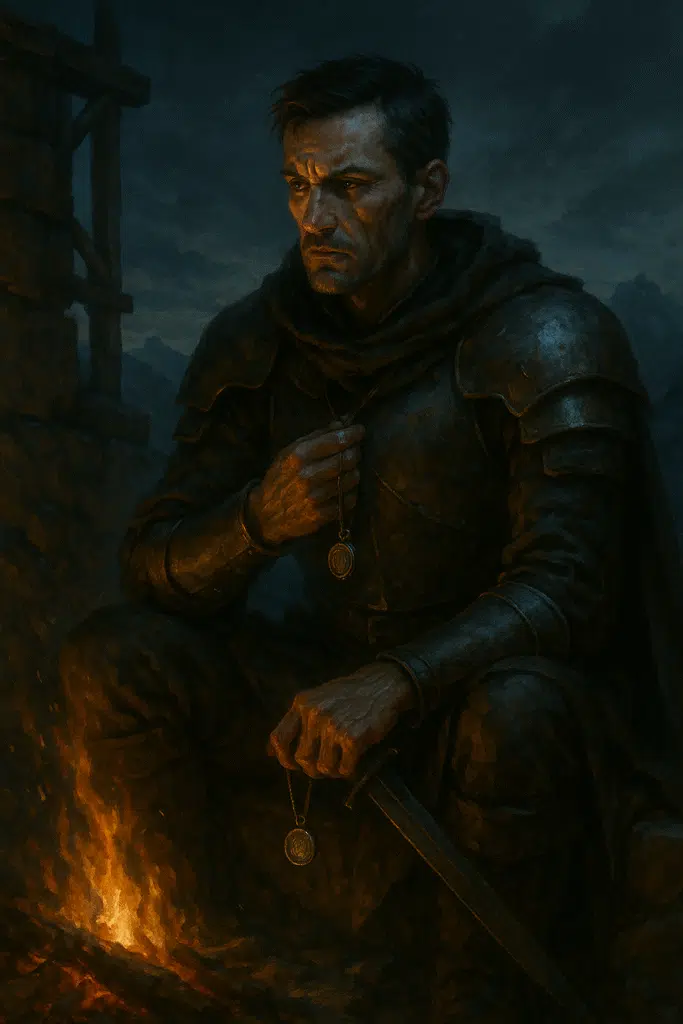
Living Between the Pages
Why readers return to specific novels during personal hardships
The phenomenon of readers returning to specific Drenai novels during times of crisis isn’t merely literary escapism—it represents a form of emotional self-medication that speaks to the profound resonance of Gemmell’s work. Readers consistently report opening “Legend” during periods of self-doubt, “Waylander” when wrestling with past mistakes, or “Winter Warriors” when facing challenges that seem beyond their capacity.
These returns occur because the novels offer not just distraction but emotional frameworks for processing real struggles. The siege at Dros Delnoch becomes a metaphor for personal endurance. As one reader expressed, “When I lost my job and felt overwhelmed by bills and responsibilities, I found myself thinking: ‘If Druss can hold the wall at sixty, I can hold mine at forty.'” The specificity of these connections—particular books for particular hardships—suggests readers intuitively recognize the emotional templates Gemmell created.
What distinguishes these returns from typical comfort reading is how they function not as escape but as confrontation. Readers don’t turn to these pages to forget their problems but to see them transformed through the lens of heroic struggle. The novels provide both emotional catharsis and practical templates for resilience—not through platitudes but through visceral experiences of characters facing impossible odds with stubborn dignity.
The axe and the sword as emotional anchors
The weapons in Gemmell’s world transcend their function as tools of violence to become powerful symbols that anchor emotional realities for both characters and readers. Druss’s axe Snaga, Waylander’s crossbow, and Skilgannon’s twin swords Supplicant and Cheater are not merely equipment but extensions of identity that carry psychological and philosophical weight.
These weapons serve as physical manifestations of their wielders’ internal states. When Druss hangs Snaga on the wall, attempting retirement, the axe represents not just his warrior past but his struggle with purpose and identity. Its retrieval marks not simply a return to violence but a reclamation of purpose and principle. For readers facing decisions about how to define themselves beyond professional roles or past achievements, this resonates on a deeply personal level.
What makes these symbols particularly effective is their ambiguity. The weapons represent both destruction and protection, both the burden of violence and the necessity of standing against evil. This dual nature creates space for readers to project their own complex relationships with power, responsibility, and moral compromise. A manager facing difficult layoffs, a parent enforcing necessary discipline, or a caregiver making tough medical decisions might all find in Druss’s axe a symbol for the weight of necessary but painful choices.
Walking with Legends Through Time
The continuity of values across different eras
One of Gemmell’s most distinctive narrative choices was to spread the Drenai Saga across different historical periods within his created world. Unlike series that maintain continuity through the same characters or immediate consequences, Gemmell’s approach reveals how core values persist across centuries, though their expressions may change with the times. This technique transforms what could have been merely sequential adventures into a profound meditation on the timelessness of certain human struggles.
The principles embodied by Druss in the earliest chronological stories find echoes in characters battling different enemies centuries later. The defense of Dros Delnoch against the Nadir in “Legend” resonates with the stand against the Joinings in “The King Beyond the Gate” despite the vast temporal distance between them. This continuity suggests that while empires rise and fall, and magical threats emerge and recede, the essential human choices regarding courage, loyalty, and sacrifice remain constant.
This approach creates a unique reading experience where descendants sometimes struggle with the same moral questions as their ancestors, though in radically changed circumstances. When readers encounter familiar family names or visit locations now transformed by time, they experience not just the thrill of recognition but a deeper understanding of how values persist while their contexts evolve. The message becomes clear: what makes us human—our capacity for both greatness and terrible failure—transcends any particular historical moment.
How the Drenai world evolves while its principles remain
The evolution of the Drenai world itself becomes a character in Gemmell’s saga, with technological changes, shifting political landscapes, and the waxing and waning of magical influences creating a dynamic backdrop against which human nature reveals its consistencies. From the pre-gunpowder era of “Legend” to the emergence of primitive firearms in later chronological works, Gemmell uses technological advancement as a lens to examine how fundamental challenges remain unchanged despite surface transformations.
Perhaps most fascinating is how the religious and mystical elements of the world evolve. The Source, the Thirty, and other spiritual aspects of the Drenai universe are presented not as static truths but as evolving understandings that reflect changing human needs and perspectives. Unlike fantasy worlds where magical systems and divine interventions remain constant, Gemmell’s approach mirrors the real-world evolution of human belief systems—adapting to new challenges while preserving core insights.
This evolutionary approach creates a uniquely mature fantasy environment where readers witness how societies process trauma, incorporate new ideas, and reinterpret their foundational myths. The Drenai of later novels remember Druss as a figure somewhere between history and legend, just as they recall great battles with the mixture of fact and embellishment that characterizes actual historical memory. This authentic portrayal of cultural evolution adds depth to Gemmell’s world that transcends the typical fantasy approach of creating a detailed but essentially static secondary world.
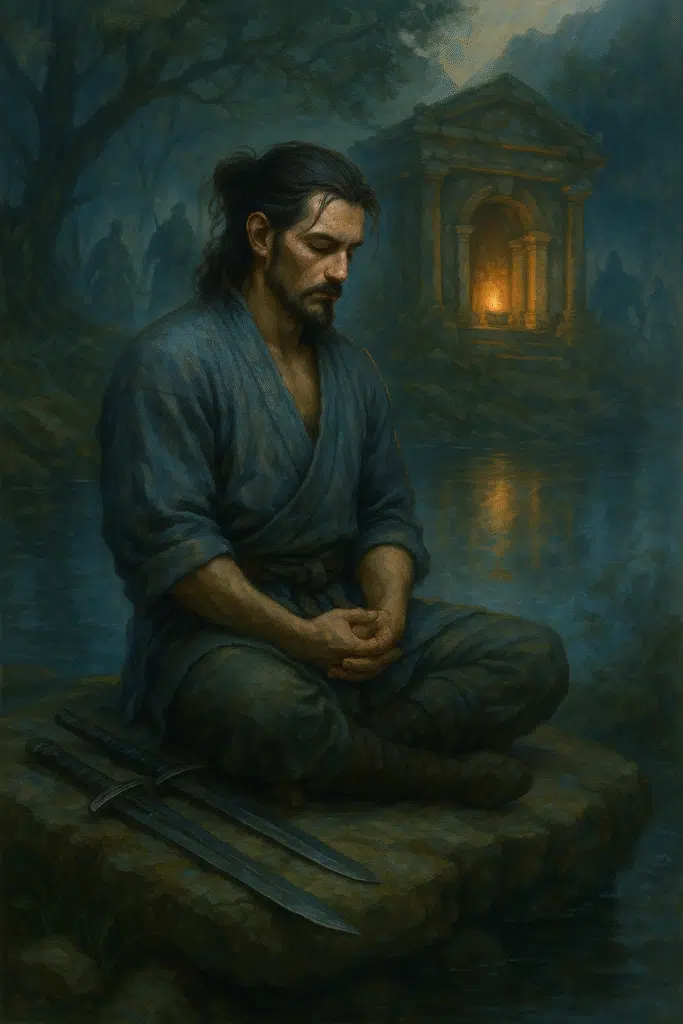
Finding Your Mirror in the Saga
The art of seeing yourself in flawed protagonists
The mirror that Gemmell’s protagonists hold up to readers reflects not idealized versions of ourselves but our authentic struggles with weakness, temptation, and failure. This is perhaps the most personally transformative aspect of the Drenai Saga—its unflinching portrayal of heroes who achieve greatness not despite their flaws but through the process of confronting them. Readers don’t merely admire these characters; they recognize themselves in them.
Tenaka Khan’s struggle with his mixed Drenai and Nadir heritage in “The King Beyond the Gate” resonates with anyone who has felt caught between cultures or identities. Waylander’s attempt to outrun his reputation speaks to those who fear being forever defined by their worst mistakes. Druss’s battle against aging reflects universal fears of diminishment and irrelevance. These mirrors work because they reflect genuine human struggles rather than simplified moral lessons.
What distinguishes this mirroring effect from simple character identification is how it facilitates self-examination. Readers report moments of profound recognition—seeing their own tendency toward cynicism in Sieben, their hidden capacity for cruelty in Waylander, or their fear of vulnerability in Druss’s gruff exterior. These recognitions can be uncomfortable but ultimately healing, as readers witness flawed characters choosing courage and integrity despite their limitations. The mirror reveals not just who we are but who we might become if we face our weaknesses with the same honesty as Gemmell’s heroes.
When fictional resolve becomes real-world courage
The phenomenon of readers drawing concrete courage from Drenai novels represents one of the most significant impacts of Gemmell’s work. Countless testimonials describe moments when the memory of fictional stands against overwhelming odds translated into real-world resilience. A cancer patient preparing for another round of chemotherapy recalls Druss at the wall. A student facing seemingly impossible exams remembers the Earl of Bronze’s words: “All men die; not all men truly live.”
This translation from fictional resolve to actual courage isn’t merely inspirational; it represents a genuine psychological resource. The vivid experiences readers have within Gemmell’s world create emotional templates they can access during their own crises. Having imaginatively stood with the defenders at Dros Delnoch, readers find themselves better equipped to stand their own ground when necessary. The walls they defend might be metaphorical—protecting their integrity, their families, or their principles—but the courage required is no less real.
What makes this fictional-to-real transfer particularly effective is how Gemmell portrays courage not as fearlessness but as action despite fear. His heroes experience doubt, exhaustion, and the temptation to surrender—yet continue anyway. This realistic portrayal creates accessible models of courage that readers can apply to ordinary challenges that nonetheless require extraordinary resolve. The result is a unique form of emotional preparation for life’s difficulties, furnished through literary experience rather than direct instruction.
Beyond the First Reading
Layers revealed only upon revisiting the stories
The depth of Gemmell’s work reveals itself most fully to those who return to the novels multiple times, discovering layers of meaning that remain invisible on first reading. Initial encounters with the Drenai Saga often focus on the excitement of battles and the forward momentum of the plots. Subsequent readings, however, uncover a web of carefully planted philosophical questions, character nuances, and thematic developments that transform the experience. This layered construction demonstrates how skilled authors employ story mechanics that create deeper meaning beyond surface narrative elements.
Conversations between characters that seemed merely expositional on first reading reveal themselves as crucial explorations of the saga’s core themes. When Rek and the dying Earl discuss the nature of courage in “Legend,” or when Waylander and Dardalion debate the morality of violence in defense of innocents, these dialogues contain philosophical depths that reward careful consideration. Many readers report being surprised by how differently they interpret these exchanges when returning to the books at different stages of life.
Subtle connections between novels also emerge more clearly on rereading. The mention of an obscure historical figure in one book gains significance when that figure becomes a protagonist in another. Locations described briefly in passing later become central settings with rich histories. This intricate continuity creates a literary experience that grows richer with familiarity, like a landscape that reveals hidden valleys and paths only to those who have traversed it multiple times.
The philosophical depths hidden in seemingly simple tales
Beneath the accessible surfaces of Gemmell’s adventure narratives lie sophisticated philosophical explorations that engage with fundamental questions of human existence. The seeming simplicity of the stories—heroes defending walls, warriors seeking redemption—belies their engagement with complex moral and existential issues that philosophers have wrestled with for centuries.
The problem of necessary violence receives particularly nuanced treatment throughout the saga. Through characters like the pacifist priest Dardalion, who eventually takes up weapons to protect the innocent, Gemmell explores the tension between absolute moral principles and the compromised realities of a violent world. This exploration avoids both the glamorization of combat and simplistic pacifism, instead examining the genuine moral costs of both action and inaction in the face of evil.
Questions of determinism versus free will run as undercurrents throughout the series. The prophetic elements introduced through characters like the Thirty and various seers create a narrative environment where destiny seems predetermined, yet characters continually assert their freedom through choices made against overwhelming odds or prophecies. This tension creates a rich philosophical playground where readers can contemplate how much their own lives are shaped by circumstances versus choices.
The nature of heroism itself receives perhaps the most thorough philosophical examination. Gemmell consistently subverts the concept, presenting heroes who doubt their own worth, who act heroically for complex or even selfish reasons, and who sometimes fail despite their best efforts. This multifaceted portrayal invites readers to move beyond simplistic notions of heroism toward a more mature understanding of human virtue as something achieved through struggle rather than innately possessed.
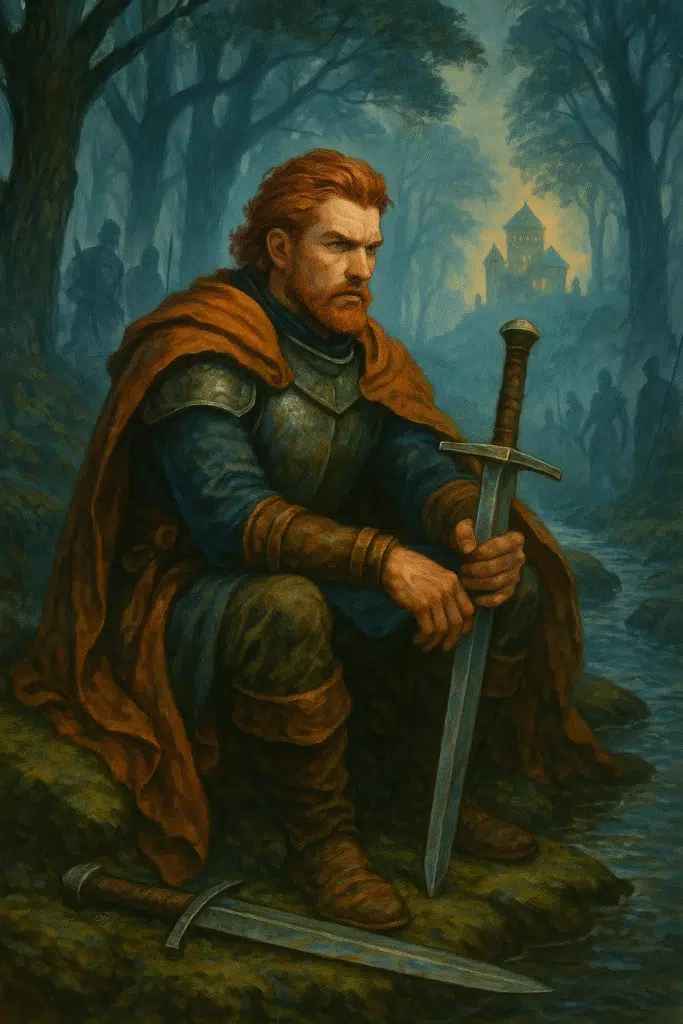
The Unexpected Life Lessons
What standing on the wall truly means
“Standing on the wall” emerges from the Drenai Saga as a powerful metaphor that transcends its literal meaning in “Legend” to become a philosophy for confronting life’s inevitable challenges. While initially representing the physical defense of Dros Delnoch against invaders, the wall comes to symbolize the moral boundaries and principles individuals choose to defend regardless of the cost or likelihood of success.
The profound lesson lies not in victory but in the choice to stand at all. When Druss and the defenders face overwhelming numbers, their significance comes not from any guarantee of triumph but from their refusal to surrender what they value most. This translates powerfully into readers’ lives, where the most meaningful stands rarely involve literal combat but rather daily choices to maintain integrity, protect the vulnerable, or preserve what matters amid various pressures to compromise.
What makes this lesson particularly valuable is how it acknowledges the reality of fear without being dominated by it. Characters on the wall experience doubt, exhaustion, and the temptation to flee—yet they remain. This honest portrayal provides readers with a template for moral courage that accommodates human weakness while still challenging them to transcend it. The wall becomes not just a location in a fantasy novel but an internal position from which to face life’s most difficult moments with dignity.
Friendship and loyalty as portrayed through battlefield bonds
While many fantasy series depict friendship as background to individual heroism, Gemmell places relationships at the center of his narrative, examining how loyalty and comradeship function under extreme pressure. The battlefield bonds formed between characters like Druss and Sieben, or among the diverse defenders of Dros Delnoch, provide profound insights into the nature of human connection that readers find applicable far beyond fantasy contexts.
These relationships gain depth from their imperfection. Friends argue, misunderstand each other, and sometimes fail one another—yet still find ways to stand together when it matters most. The friendship between the cynical poet Sieben and the straightforward warrior Druss works precisely because Gemmell acknowledges their fundamental differences rather than glossing over them. This realistic portrayal helps readers recognize and value the complex loyalties in their own lives, even when those connections involve tension or disagreement.
Perhaps most significantly, Gemmell explores how shared purpose creates bonds between unlikely allies. Characters who would never choose each other’s company in peaceful times find themselves forming deep connections through common cause. This insight resonates with readers who have experienced how collective challenges—whether in workplaces, communities, or families—can forge relationships of surprising depth and resilience. The lesson becomes clear: authentic friendship isn’t about perfect harmony but about choosing to face difficulty together rather than alone.
Gemmell’s Quiet Revolution
How the Drenai Saga changed heroic fantasy
David Gemmell’s approach to heroic fantasy represented a significant departure from the genre conventions that dominated when he began publishing. While contemporaries were creating increasingly elaborate magical systems and expansive worldbuilding, Gemmell focused relentlessly on the human element—the moral and emotional reality of his characters. This shift in emphasis changed readers’ expectations of what heroic fantasy could accomplish and influenced countless writers who followed.
His most revolutionary contribution was the introduction of genuine moral ambiguity without surrendering to cynicism or nihilism. Unlike the clear divisions between good and evil in works like “The Lord of the Rings” or the moral relativism that would later characterize some grimdark fantasy, Gemmell created a world where ethical choices remained meaningful despite their complexity. This approach helped bridge different traditions within fantasy literature’s major realms, creating works that combined high fantasy’s scope with more psychologically grounded character development. Characters like Waylander could be both assassin and savior, while societies like the Drenai could fight for freedom while harboring their own forms of injustice and prejudice.
The age of his protagonists also marked a departure from genre norms. By placing characters like Druss in their fifties or sixties at the center of heroic adventures, Gemmell expanded the emotional range of fantasy literature to include the specific struggles of middle and old age. This choice created space for explorations of legacy, declining physical prowess, and the wisdom that comes only through long experience—themes largely absent from fantasy works focused on coming-of-age narratives or heroes in their prime.
The literary legacy felt in both readers and writers
Gemmell’s influence extends both vertically through generations of fantasy authors and horizontally across readers whose relationship with the genre was permanently altered by encountering his work. Writers as diverse as John Gwynne, Miles Cameron, and Anthony Ryan have acknowledged their debt to his approach, particularly his ability to balance exciting action with moral depth and his focus on the psychological reality of combat and its aftermath.
For readers, the legacy manifests in changed expectations of what fantasy literature can provide. Many report that after experiencing Gemmell’s work, they found themselves dissatisfied with stories that offered spectacular worldbuilding but thin characterization or elaborate magic systems without moral complexity. His novels demonstrated that accessible adventure narratives could simultaneously engage with serious philosophical questions and emotional struggles, raising the bar for meaningful engagement within popular fiction.
Perhaps most significantly, Gemmell’s legacy lives in how his work bridged the perceived gap between literary merit and popular appeal. He proved that stories centering on warriors and battles could contain psychological insight and moral wisdom without sacrificing their accessibility or excitement. This achievement helped elevate heroic fantasy in the literary landscape, challenging dismissive attitudes toward genre fiction by demonstrating its capacity for depth without pretension.
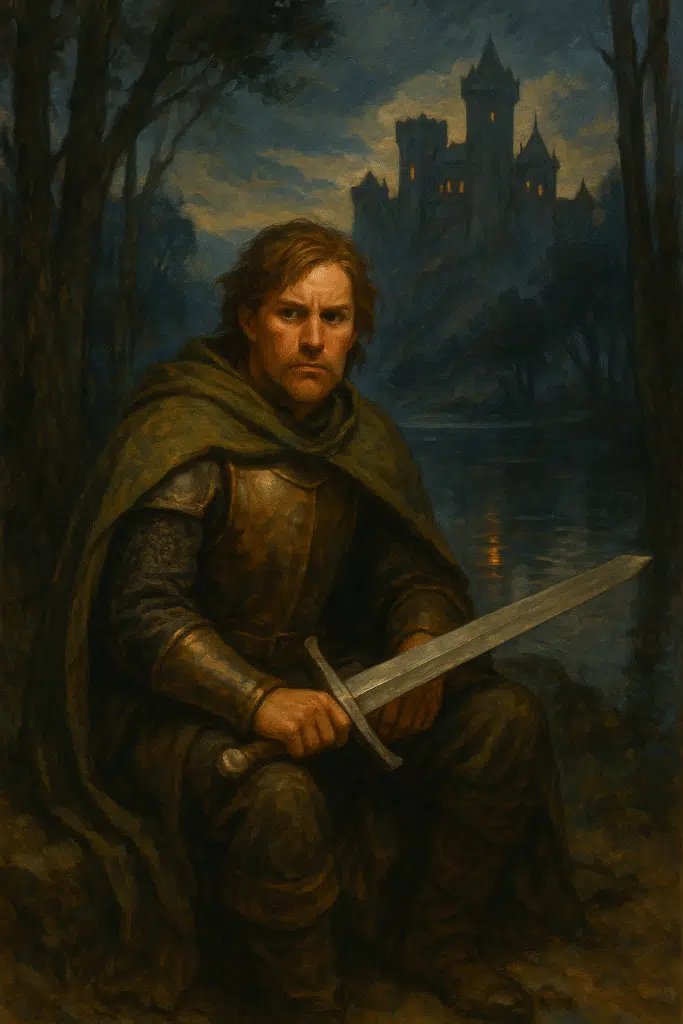
When Fiction Becomes Your Compass
Readers who built personal codes from fictional honor
Among the most profound impacts of Gemmell’s work is how readers have incorporated elements of Drenai ethics into their actual lives. Beyond mere inspiration, many report consciously adopting specific principles from the books as guides for real-world decision-making. The warrior code articulated by Druss—never harm children or women, protect the weak, avoid dishonesty—has been translated into contemporary contexts by readers in professions ranging from law enforcement to education to business.
What makes this adoption of fictional ethics particularly noteworthy is its deliberate nature. Readers speak of consciously asking themselves “What would Druss do?” or “How would Waylander handle this situation now that he seeks redemption?” when facing ethical dilemmas. A police officer describes recalling Druss’s principles when tempted to use excessive force. A teacher mentions channeling the patience and commitment of the Earl of Bronze when working with struggling students. These translations from fantasy to reality represent a unique form of moral formation. This phenomenon mirrors how establishing clear foundations for shared experiences creates lasting frameworks that participants carry into their daily lives.
This phenomenon reflects Gemmell’s success in creating not merely an entertaining fictional world but a coherent moral vision that resonates because it addresses permanent human challenges. The principles embodied by his characters appeal not because they’re attached to fantastic elements but because they speak to universal questions about courage, integrity, and responsibility. Readers find in these fictional codes not an escape from reality but a clarification of values that helps them navigate it more effectively.
The wisdom that transcends the fantasy setting
The enduring value of Gemmell’s work lies in how its central insights transcend both their fantasy trappings and the specific historical moment of their creation. While magical elements and invented geography provide the framework, the wisdom within the Drenai Saga addresses perennial aspects of the human condition in ways that remain relevant regardless of readers’ circumstances or beliefs.
The insight that courage is not the absence of fear but action despite it speaks to human experience across cultures and eras. When Druss tells young soldiers, “Fear is like fire. If controlled it warms. If uncontrolled it burns,” he articulates a psychological truth that applies equally to ancient battlefields and modern boardrooms. Similarly, Waylander’s journey illustrates the universal possibility of choosing a different path regardless of past mistakes—a message that resonates with fundamental human hopes for renewal and second chances.
What distinguishes this transcendent wisdom from mere platitudes is how it emerges organically from characters’ experiences rather than being imposed as authorial commentary. Readers discover these insights alongside protagonists who struggle, fail, and occasionally succeed. The wisdom feels earned rather than declared, emerging from the crucible of difficult choices rather than abstract contemplation. This grounding in human struggle gives Gemmell’s philosophical insights a practical quality that explains their unusual transferability from fantasy to readers’ actual lives.
Perhaps what keeps us returning to the Drenai world isn’t nostalgia but recognition—that in our own moments of doubt and darkness, we too might find that unwavering center that Gemmell’s heroes embody. The axe may be fictional, the battles long ago, but the choices remain eternal. When we close these books, we carry something forward—not just memories of great adventures, but quiet standards against which we measure ourselves. In honoring these stories, we honor the best parts of our own nature, the resolve that stands when all else falls. The Source may be Gemmell’s creation, but the strength it represents lives in each reader who has ever whispered to themselves in difficult moments: “What would Druss do?”



